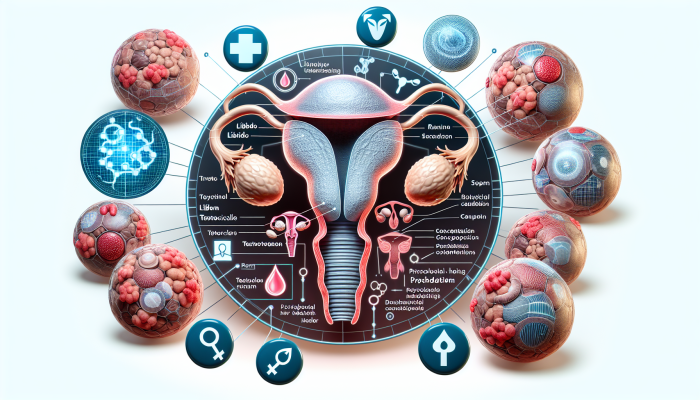Comprehensive Guide to Testosterone Testing Standards for Optimal Health Improvement
Testosterone is often seen as a fundamental element of hormonal health, crucial for both men and women. This powerful steroid hormone plays an essential role in facilitating muscle growth, boosting sexual drive, preserving bone density, and ensuring emotional stability. Achieving a balanced level of testosterone can greatly enhance one’s quality of life, impacting aspects such as energy levels, mood stability, and cognitive function. Thus, grasping the nuances of testosterone testing standards is vital for diagnosing hormonal imbalances and fostering holistic wellness.
Understanding the Critical Role of Testosterone in Comprehensive Health

The production of testosterone predominantly occurs in the testicles for men, while women produce it in smaller amounts through their ovaries. Although this hormone is frequently associated with male characteristics such as muscle mass and body hair, it also serves critical functions in women's health. Fluctuations in testosterone levels can deeply affect libido, sperm production, and mental clarity. Low testosterone levels can result in various health complications, including depression, chronic fatigue, and diminished sexual performance.
Moreover, the effects of testosterone extend to mental wellness. Research suggests that maintaining optimal testosterone levels can enhance mood and increase resilience against stress. This underscores the importance of regularly monitoring and understanding your testosterone levels, especially if you experience shifts in your emotional or psychological health.
Insights into the Establishment of Testosterone Testing Standards
The establishment of testosterone testing standards arises from extensive clinical studies involving healthy subjects. These studies take into account a variety of factors, including age, sex, and the timing of tests. Naturally, it’s important to note that testosterone levels can vary throughout the day, often peaking in the morning hours. Therefore, laboratories adapt their standards to accommodate these fluctuations.
It's essential to recognize that reference ranges can differ between laboratories, largely due to variations in testing methods and the demographic characteristics of the populations studied. Consequently, what one lab considers “normal” may vary from another. This variability highlights the importance of consulting with a healthcare professional for a precise interpretation of your results, tailored to your specific health situation.
Key Influences on Variability in Testosterone Testing Standards Across Different Laboratories
The differences in testosterone testing standards among various laboratories arise from several key factors. Each laboratory utilizes its own testing techniques, which can differ in accuracy and sensitivity. For example, while some labs may rely on immunoassays, others might adopt sophisticated techniques like liquid chromatography. Such differences can lead to varying test results and interpretations.
Moreover, the reference populations selected to create these norms can significantly affect the resulting values. If a laboratory predominantly tests patients from a specific age group or ethnic background, its established norms may not accurately reflect the general population. Thus, obtaining results from a trustworthy laboratory and discussing them with a healthcare professional is crucial for contextualizing your results within your medical history.
Understanding the Implications of Your Testosterone Testing Results

Interpreting your testosterone test results may seem challenging at first; however, it becomes straightforward once you familiarize yourself with the established standards and their significance. Typically, testosterone test outcomes are reported in nanograms per deciliter (ng/dL), with variations that can arise from factors such as age and gender.
Step-by-Step Approach to Deciphering Your Testosterone Test Results
The initial step in assessing your testosterone test results is to compare them against the testosterone testing standards. In general, testosterone levels for men typically range from 300 to 1,000 ng/dL, while women's levels generally fall between 15 and 70 ng/dL. If your results lie outside these established boundaries, further investigation may be necessary to uncover the underlying causes.
It is also imperative to understand that test results should be interpreted in the context of your overall health. What may appear to be low testosterone levels for one individual could be entirely normal for another, depending on personal factors such as age and general health status. Engaging in a discussion with a healthcare professional will help you evaluate your results within the framework of your complete health profile and decide if additional testing or interventions are warranted.
Understanding the Health Implications of Low Testosterone Levels
Clinically recognized as hypogonadism, low testosterone levels can lead to a range of serious health consequences. Common symptoms associated with this condition include a significant drop in libido, chronic fatigue, reduced muscle mass, and mood swings. If you find yourself experiencing any of these symptoms, it would be wise to consider undergoing a testosterone test to determine whether your levels fall below the normal range.
The causes of low testosterone can be multifaceted, encompassing both medical conditions and lifestyle factors. Issues like diabetes, obesity, or disorders affecting the pituitary gland can hinder testosterone production. Additionally, environmental factors, including exposure to harmful chemicals or endocrine disruptors, could also play a role. A comprehensive medical evaluation is essential to accurately pinpoint the cause and devise the most effective treatment strategies.
Understanding the Risks Associated with Elevated Testosterone Levels

On the flip side, excessively high testosterone levels can also pose significant health risks. Elevated testosterone levels may be associated with medical conditions such as testicular tumors or the misuse of anabolic steroids. Symptoms linked to high testosterone can include acne outbreaks, hypertension, and mood alterations, including increased aggression.
It is vital not to jump to conclusions based solely on elevated results. Engaging in a dialogue with a healthcare professional is necessary to thoroughly assess the findings and consider further testing to uncover the underlying factors. Discussing the potential risks associated with high testosterone levels is equally important, as these may include cardiovascular complications and other adverse effects.
Essential Factors Influencing Testosterone Levels: Insights for Enhanced Health
Testosterone levels are dynamic and can be affected by a multitude of factors. Gaining insight into these influences equips you to make informed decisions regarding your hormonal health.
The Role of Age in Shaping Testosterone Levels
Age is a significant determinant of testosterone testing standards. It is well-established that testosterone levels in men begin to experience a gradual decline around the age of 30. Although this decrease is usually slow, it can lead to serious implications for both physical and mental health over time.
Women, while generally having lower testosterone levels, also face a decline as they age, particularly following menopause. This reduction can result in symptoms such as fatigue, decreased libido, and mood swings. Therefore, it is crucial for all individuals, regardless of gender, to keep track of their testosterone levels as they age and seek medical advice if any signs of hypogonadism emerge.
The Influence of Lifestyle Choices on Testosterone Levels
Your lifestyle choices play a crucial role in the maintenance of optimal testosterone levels. Adopting healthy habits, such as consuming a balanced diet, engaging in regular exercise, and ensuring sufficient sleep, can significantly support optimal hormonal levels. Research has shown that physical activity, particularly strength training, can notably stimulate testosterone production.
Conversely, risk factors such as obesity, a sedentary lifestyle, and chronic stress can adversely impact hormonal balance. Elevated stress levels, in particular, can raise cortisol levels, a hormone that negatively influences testosterone production. By incorporating stress-relief strategies such as meditation or yoga and leading an active lifestyle, you can significantly promote your hormonal health.
How Medications and Supplements Affect Testosterone Levels
Certain medications have the potential to significantly alter testosterone levels. Drugs such as corticosteroids, opioids, and some antidepressants can lead to a decrease in testosterone production. If you are currently taking medication and have concerns regarding your testosterone levels, it is advisable to discuss these concerns with your healthcare provider.
On the other hand, some supplements that claim to enhance testosterone levels, such as zinc and vitamin D, may be beneficial, especially for individuals with deficiencies. However, it is crucial to consult a healthcare professional before starting any supplementation. A balanced approach that emphasizes a nutritious diet and an active lifestyle often proves to be the most effective strategy for maintaining optimal hormonal levels.
Recognizing Symptoms and Diagnostic Techniques for Abnormal Testosterone Levels
Identifying the symptoms associated with abnormal testosterone levels is essential for early detection and timely intervention. This process typically involves physical examinations and laboratory testing.
Common Symptoms to Look For with Low Testosterone Levels
Symptoms associated with low testosterone levels can vary among individuals; however, certain common signs may indicate a hormonal imbalance. Chronic fatigue is frequently reported as one of the most prominent symptoms. If you experience a drop in your energy levels that seems disproportionate to other factors, it may serve as a warning signal.
A decrease in libido is another key indicator. Men may struggle to achieve or sustain an erection, while women may experience a reduced interest in sex. Additionally, loss of muscle mass, weight gain, and mood fluctuations, such as anxiety or depression, may also be linked to low testosterone levels.
When to Seek Expert Guidance for Testosterone Testing
If you are experiencing persistent symptoms or have specific concerns about your testosterone levels, it is advisable to consult a healthcare professional. Early evaluation can play a crucial role in identifying potential underlying health issues and developing an appropriate action plan.
For men over 40 or women undergoing menopause, it may be particularly prudent to discuss testosterone testing with your physician, even in the absence of symptoms. Regular screenings can assist in monitoring your testosterone levels and empower you to make informed health decisions.
The Diagnostic Process for Assessing Testosterone Levels
The diagnostic process for evaluating testosterone levels generally begins with a medical consultation, during which your symptoms and medical history are thoroughly reviewed. If your doctor suspects a hormonal imbalance, they may recommend a blood test to assess your testosterone levels.
Testing is typically conducted in the morning when testosterone levels are at their highest. Should the results indicate abnormalities, further testing may be necessary to determine the underlying cause. This could involve assessments of pituitary function or additional hormonal evaluations. Accurate diagnosis is crucial for formulating an effective treatment plan.
Therapeutic Approaches for Addressing Abnormal Testosterone Levels
Upon confirming abnormal testosterone levels, numerous treatment options may be available. The appropriate choice of treatment often depends on the underlying cause and individual preferences.
Effective Methods for Managing Low Testosterone Levels
Addressing low testosterone levels may involve testosterone replacement therapy (TRT), which aims to restore normal hormonal levels. TRT can be delivered through various methods, including injections, gels, or transdermal patches. This treatment can effectively alleviate symptoms associated with hypogonadism, such as fatigue, low libido, and decreased muscle health.
However, it is essential to discuss the potential risks and benefits of TRT with your healthcare provider. While many patients experience symptom relief, there are associated risks, including cardiovascular complications and possible side effects. Regular monitoring of hormonal levels is often necessary to ensure the safety and efficacy of the treatment.
Natural Approaches to Enhance Testosterone Levels
For individuals preferring to avoid hormonal treatments, several natural strategies can assist in increasing testosterone levels. Maintaining a healthy lifestyle characterized by a nutrient-rich balanced diet is essential. Foods rich in zinc, vitamin D, and omega-3 fatty acids can support testosterone production.
Incorporating physical activity, particularly resistance training, is another excellent method for stimulating testosterone. Additionally, engaging in stress management practices such as meditation, yoga, or enjoyable recreational activities can help lower cortisol levels, thereby fostering optimal hormonal balance.
Evaluating the Benefits and Risks of Testosterone Replacement Therapy
Testosterone replacement therapy offers numerous benefits, including improved libido, enhanced mood, and increased muscle mass. Nevertheless, it also carries potential risks, such as a heightened risk of cardiovascular disease, sleep apnea, and prostate complications.
Thus, carefully weighing the advantages and disadvantages of TRT is vital. Engaging in a comprehensive discussion with a healthcare professional is essential in determining whether this treatment aligns with your health goals. Regular follow-ups are also necessary to monitor treatment effects and make adjustments as required.
The Significant Impact of Testosterone Levels on Holistic Health
Testosterone levels profoundly influence various health dimensions, including mental health, bone integrity, and cardiovascular function. Understanding these relationships can enable you to manage your overall well-being more effectively.
Exploring the Effects of Testosterone Levels on Mental Health
Research indicates that testosterone levels significantly affect mental health. Low testosterone levels are often correlated with mood disorders such as depression and anxiety. Individuals with adequate testosterone levels tend to exhibit better emotional resilience and enjoy an enhanced quality of life.
Importantly, addressing hypogonadism may lead to favorable mental health outcomes. Many patients report an improvement in mood and a decrease in depressive symptoms following the restoration of normal hormonal levels. This highlights the importance of monitoring testosterone levels, especially concerning mental health challenges.
The Essential Role of Testosterone in Promoting Bone Health
Testosterone is pivotal in supporting bone health, contributing to bone density and reducing the risk of osteoporosis. Sufficient testosterone levels are crucial for maintaining bone mass and minimizing fracture risk, particularly in older adults, as declining testosterone levels can lead to increased bone fragility.
Studies indicate that testosterone replacement therapy may also positively impact bone density in both men and women suffering from hypogonadism. Therefore, monitoring testosterone levels and considering suitable treatment options is vital for preserving optimal bone health.
The Interconnection Between Testosterone Levels and Cardiovascular Wellness
The relationship between testosterone levels and cardiovascular health is intricate. Balanced testosterone levels can promote better heart health by influencing lipid metabolism and supporting vascular function. However, excessively high testosterone levels, often associated with steroid use, may elevate the risk of cardiovascular diseases.
Achieving a healthy hormonal balance is imperative. Regular monitoring of your testosterone levels and consultations with a healthcare professional will facilitate the management of these health issues and support optimal cardiovascular health.
Proactive Monitoring and Testing of Testosterone Levels: Key Recommendations
Taking proactive steps to prepare for a testosterone test and monitor your testosterone levels is vital for maintaining optimal hormonal health. Here are some useful tips to guide you through this process.
Essential Preparation Guidelines for a Testosterone Test
Proper preparation for a testosterone test is critical to ensure accurate results. It is recommended to avoid intense exercise, alcohol consumption, and specific medications, including corticosteroids, at least 24 hours before the test. Generally, tests are conducted in the morning when testosterone levels are naturally elevated to provide more reliable outcomes.
Discussing any questions or concerns with your physician prior to the test is also essential. Adequate preparation can significantly influence the accuracy of your results and enhance your understanding of your hormonal health.
Determining the Optimal Frequency for Testosterone Testing
The frequency of testosterone testing is typically guided by symptoms and medical advice. For men over 40, annual testing is advisable, particularly if there are concerns regarding low testosterone levels. For individuals undergoing treatment or displaying symptoms, more frequent testing may be necessary to monitor testosterone levels and adjust treatment plans as needed.
Maintaining open communication with your healthcare provider is crucial in determining a testing frequency that best aligns with your individual health needs.
The Importance of Ongoing Monitoring of Testosterone Levels
Consistent monitoring of testosterone levels allows for assessing treatment effectiveness and identifying changes in your hormonal health. This is particularly vital for those receiving testosterone replacement therapy, as adjustments may be required over time.
By regularly monitoring your testosterone levels, you can collaborate closely with your healthcare provider to optimize treatment and ensure a healthy hormonal balance. This proactive approach can enhance your overall health and help prevent potential health complications in the future.
Frequently Asked Questions Regarding Testosterone Testing Standards
Do testosterone levels fluctuate throughout the day?
Yes, testosterone levels naturally fluctuate during the day, typically reaching their peak in the morning hours.
What symptoms indicate low testosterone levels?
Common symptoms include persistent fatigue, decreased libido, mood changes, and loss of muscle mass.
How do testosterone levels impact mental health?
Low testosterone levels can contribute to mental health issues, including depression and anxiety.
When should I consult a healthcare provider for testosterone testing?
Consult a physician if you experience persistent symptoms or have concerns about your testosterone levels.
What treatment options are available for low testosterone levels?
Available options include testosterone replacement therapy, lifestyle modifications, and natural remedies.
Is testosterone replacement therapy a safe option?
While beneficial for many, testosterone replacement therapy carries potential risks, including cardiovascular complications.
Can supplements help in increasing testosterone levels?
Some supplements may assist, but it is essential to consult a healthcare professional before using them.
What is the normal testosterone range for men?
Normal testosterone levels in men typically range from 300 to 1,000 ng/dL.
Should women consider testosterone testing?
Yes, women can also benefit from testosterone testing, particularly if they exhibit signs of hormonal imbalance.
What is the recommended frequency for testosterone testing?
The testing frequency depends on symptoms and medical history; however, annual testing may be suitable for men over 40.
Connect with us on Facebook!
This article was originally published on https://bloodtest.co.uk
The Article: Testosterone Testing Standards: Your Ultimate Guide appeared first on: https://ezbloodtest.com
The Article Testosterone Testing Standards: Essential Guide for You Was Found On https://limitsofstrategy.com


Your insights into testosterone’s multifaceted role in health highlight an often overlooked aspect of hormonal balance. I’ve noticed in my own experience that managing testosterone levels can indeed transform not just physical health, but emotional well-being as well. For example, since I’ve started taking a more active approach to my fitness and nutrition, I’ve felt significant improvements in both energy and mood stability.
It’s great to hear how you’ve been navigating your own journey with testosterone and its effects on your health. It’s so true that the connection between hormonal balance and overall well-being can feel like a hidden puzzle piece that many overlook. When you start paying attention to it, the pieces really do start to fit together in remarkable ways.
I’m glad to hear about your positive experience! If you’re interested in exploring more about how to optimize testosterone and overall wellness, check out this resource for helpful tips and insights.
https://berwickambassadors.co.uk/FaceTune
It’s interesting to hear about your personal experience with managing testosterone levels through fitness and nutrition. It’s a reminder that our bodies aren’t isolated systems; they’re influenced by the daily choices we make. Many overlook how targeted lifestyle changes can have such a comprehensive effect—not just in muscle gain or weight loss, but on mental clarity and mood.
You hit the nail on the head! It’s wild how the stuff we put in our bodies can turn us into fitness warriors or couch potatoes—sometimes faster than you can say “second helping of dessert.”
It really is surprising how quickly the right foods can shift our mindset and energy levels. I’ve noticed on days when I opt for whole, nutrient-dense meals, I feel more focused and energized—like I’m ready to tackle a workout or a big project. Then, there are those other days when I indulge a bit too much and end up just wanting to binge-watch my favorite series on the couch. It’s such a stark contrast.
It’s fascinating how you’ve noticed that connection between managing your testosterone levels and your overall well-being. It really brings to light how interconnected physical health and emotional health can be. I’ve seen similar changes in my own life—when I focus on regular exercise and a balanced diet, it feels like a domino effect; not just in terms of energy, but even clarity of thought and emotional resilience.
It’s interesting to hear how directly managing testosterone levels has impacted your daily life. Your experience illustrates how interconnected our physical and emotional states can be. A proactive approach to fitness and nutrition can unlock a lot more than just physical improvements; it seems to create a more resilient emotional landscape too.